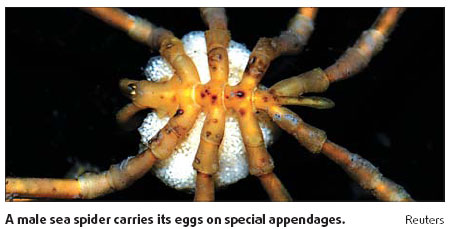A city of brittle stars off the coast of New Zealand, an Antarctic expressway where octopuses ride along in a flow of extra salty water and a carpet of tiny crustaceans on the Gulf of Mexico sea floor are among the wonders discovered by researchers compiling a massive census of marine life.

"We are still making discoveries," but researchers also are busy assembling data already collected into the big picture of life in the oceans, senior scientist Ron O'Dor said.
The fourth update of the census was released on Sunday ahead of a meeting of hundreds of researchers that begins Tuesday in Valencia, Spain. More than 2,000 scientists from 82 nations are taking part in the project, which is to be completed in 2010.
A discovery that delights O'Dor is that many deep-ocean octopuses share an Antarctic origin. As the Antarctic got colder, ice increased and octopuses were forced into deeper water, he said.
Salt and oxygen are concentrated in the deeper waters, he said. This dense water then flows out, carrying along the octopuses that have adapted to the new conditions, enabling them to spread to deep waters around the world.
Deep-water octopuses worldwide, he pointed out, lack the ink sack that allows their shallow-water cousins to shoot out a camouflage screen.
After all, if they live where it is dark, ink is unnecessary, said O'Dor, a Canadian member of the research team.
Patricia Miloslavich, a senior scientist from Venezuela, is pleased with newly discovered mollusks, from snails to cuttlefish to squids.
Once the census is complete, the plan is to publish three books: a popular survey of sea life, a second book with chapters for each working group and a third focusing on biodiversity.
O'Dor said also researchers are working with the online scientific journal PLoS ONE, which is open to anyone and thus would make the results readily available.

(China Daily November 11, 2008)